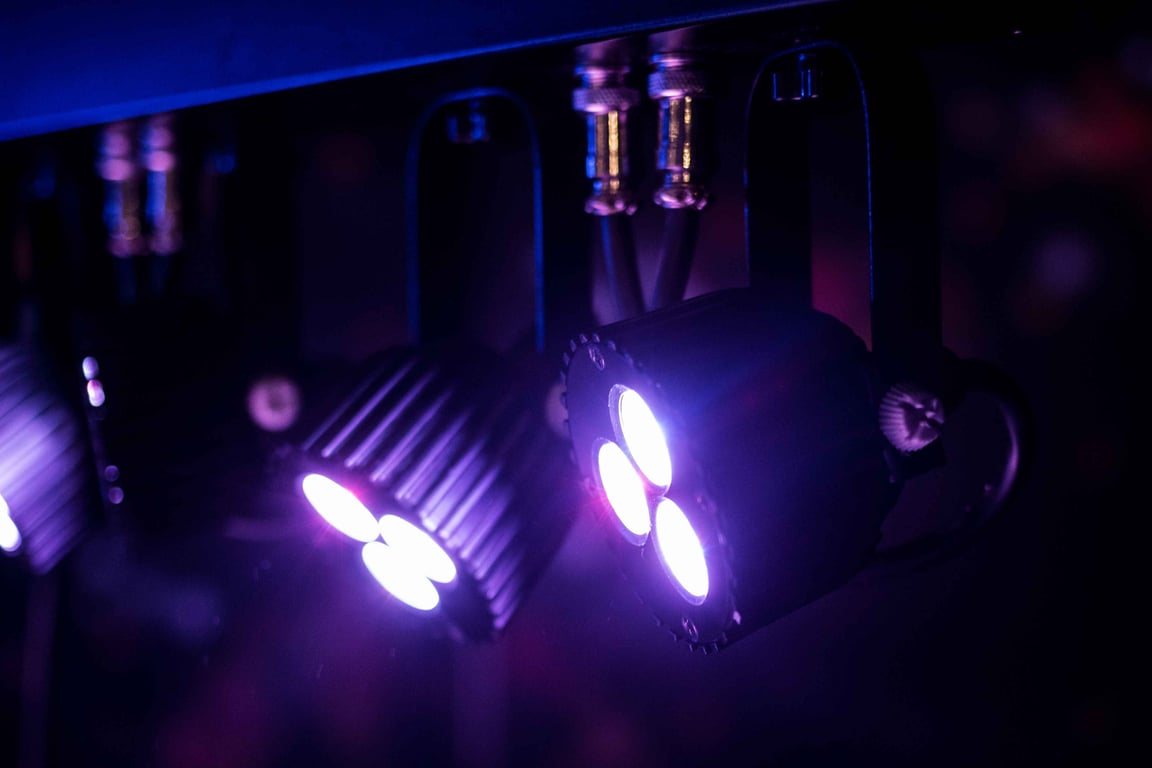Lowest Price Guaranteed Shop Now

LED, or Light Emitting Diode, is a cutting-edge lighting technology that has revolutionized the way we illuminate spaces and power electronic displays. Unlike traditional light sources that rely on filaments or gas, LEDs produce light through a process called electroluminescence, using semiconductor materials to emit photons efficiently. Known for their exceptional energy efficiency, durability, and versatility, LEDs are now found in a wide range of applications, from household lighting and automotive headlights to high-resolution displays and medical devices.
LED stands for Light Emitting Diode, a semiconductor light source that emits light when current flows through it. Unlike traditional incandescent bulbs, which rely on heating a filament, LEDs produce light through electroluminescence. This unique technology allows LEDs to consume less power and last significantly longer, making them an energy-efficient lighting solution for various applications.
The process of electroluminescence is fundamental to how LEDs operate. When an electrical current passes through the LED, electrons move within the semiconductor material. As these electrons transition between different energy levels, they release photons—the basic units of light.
An LED is made from a semiconductor material, typically gallium arsenide, gallium phosphide, or gallium nitride. This semiconductor material has specific properties that allow it to emit light efficiently:
N-type Layer: This layer has extra electrons (negative charge carriers).
P-type Layer: This layer has "holes" or positive charge carriers.
The meeting point of these two layers is known as the p-n junction, which is where the light emission process occurs.
As current flows through the diode, electrons from the N-type layer and holes from the P-type layer meet and recombine at the p-n junction. This recombination releases energy in the form of photons, creating visible light.
LEDs are highly versatile and can be found in various forms, each optimized for specific uses. Here are some key types of LEDs:
Commonly used in small indicators like remote controls, dashboards, and small-scale lighting, miniature LEDs are compact and efficient.
These are used in applications requiring intense illumination, such as street lighting, automotive lighting, and commercial lighting systems. High-power LEDs generate more heat and require efficient thermal management.
OLEDs use organic compounds to emit light, which makes them thin and flexible. These LEDs are commonly used in screens for smartphones, TVs, and other displays.
COB LEDs have multiple LED chips on a single board, resulting in higher light output and efficiency. They are widely used in commercial and industrial lighting.
LEDs have become a preferred choice across industries due to several benefits:
LEDs convert almost all electrical energy into light, minimizing energy loss as heat. They consume up to 80% less energy than traditional incandescent bulbs, making them an eco-friendly option.
The longevity of LEDs is unmatched, with some LEDs rated for over 50,000 hours of continuous use. This durability significantly reduces replacement and maintenance costs.
LEDs contain no toxic materials like mercury, which is commonly found in CFLs (compact fluorescent lamps). Their energy efficiency also means reduced greenhouse gas emissions.
Due to their compact size, LEDs can be designed into various shapes and applications, from flexible strips to miniature circuits. This adaptability allows for creative uses in architectural, automotive, and decorative lighting.
The efficiency of an LED depends on several factors, including:
Excessive heat can degrade LED performance over time. Efficient heat sinks and materials are used to ensure optimal thermal management in LED systems, maintaining light quality and longevity.
Luminous efficacy refers to the amount of visible light produced per watt of electricity consumed. LEDs boast a high efficacy, with newer models producing over 150 lumens per watt. This metric is critical when choosing LEDs for energy-sensitive applications.
LEDs come in various color temperatures, from warm (2700K) to daylight (6500K). The CRI indicates how accurately an LED reproduces colors compared to natural light. High-CRI LEDs are often used in settings where color accuracy is essential, such as retail and art displays.
The LED industry continues to evolve with advancements aimed at improving efficiency, cost, and application flexibility:
Integrated with smart technology, LEDs can be controlled via apps or voice commands, allowing for personalized lighting experiences and energy management.
QLEDs use quantum dots to produce highly pure and vibrant colors, making them ideal for display technologies.
MicroLED technology involves smaller LED structures that allow for high-resolution displays. This development is particularly promising for screens and displays in wearable and mobile devices.
This infographic breaks it down, explaining what LED stands for, how it works, and why it's an energy-efficient lighting choice.
LEDs are not only an efficient and environmentally friendly lighting solution but also a versatile technology with a range of applications. As research progresses, LEDs are expected to become even more efficient, compact, and adaptable. With continuous advancements, LEDs are set to play a critical role in the future of sustainable lighting solutions, marking a significant shift in how we illuminate our world.